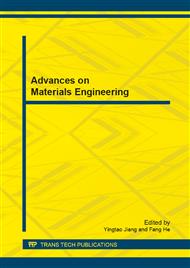p.3
p.8
p.12
p.17
p.22
p.28
p.33
p.38
p.45
Numerical Modeling of Steel Fiber-Reinforced Beam
Abstract:
Steel fibre reinforced concrete is emerging very popular and attractive material in structural engineering because of its enhanced mechanical performance as compared to conventional concrete. It is well established that one of the important properties of steel fibre reinforced concrete (SFRC) is its superior resistance to cracking and crack propagation. Additionally, incorporation of fibres in the concrete enhances the compressive, tensile and shear strengths, flexural toughness, durability and resistance to impact. The mechanical properties of fibre reinforced concrete depend on the type and specification of fibres. In this paper numerical investigation of SFRC beam using ANSYS is presented. The analysis was conducted till the ultimate failure cracks. Eight-noded solid brick elements were used to model the concrete. Internal reinforcement was modeled by using 3D spar elements. It has been observed the results from the finite element failure behavior indicates a good agreement with the experimental failure behavior.
Info:
Periodical:
Pages:
22-27
Citation:
Online since:
August 2013
Authors:
Price:
Сopyright:
© 2013 Trans Tech Publications Ltd. All Rights Reserved
Share:
Citation:


